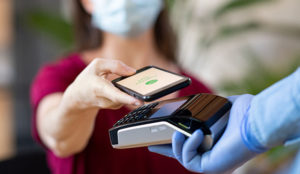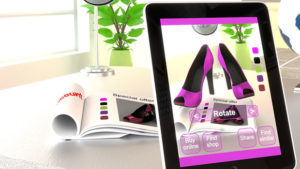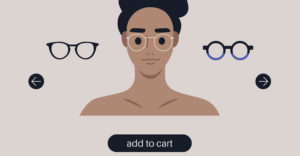With the advent of digital technologies and the radical growth of online shopping, it might seem that brick-and-mortar stores are on the way out. However, nothing could be further from the truth. Physical stores are likely to remain far into the foreseeable future — though the nature of those stores will be fundamentally transformed.
“Most large store-based chains of the future will have to be competent or masterful omnichannel retailers if they are to endure; there’s almost no way around that reality,” said Christa Hart, senior managing director in the retail and consumer products practice at FTI Consulting.
“If you are entirely store-dependent, then too many transactions in your product categories likely will bypass you for the online channel,” she told the E-Commerce Times.
Customers walk into stores holding smartphones, and they easily can check competitors’ prices, view similar products, and research other offerings. Retailers who understand this reality and shape their shopping experience accordingly will find ways to capture the interest and the dollars of these digitally savvy consumers.
“Consumers now shop in a channel-agnostic manner with multiple devices,” observed Katie Hickey, marketing manager at Usabilla.
“The store is no longer the stage for the beginning, the middle and end of a shopping experience,” she told the E-Commerce Times.
With all of that in mind, following are some ways the brick-and-mortar stores of the future can make sure they’re appealing to the customers of the future.
1. Offer Online Shopping In-Store
Even when they’re in a physical store, customers like to shop online, so smart retailers will give them that opportunity.
“Enabling people to browse your e-commerce site in-store lets them see products or variants that you may not have on-site,” noted Hickey. “If they see something they like, you can just have your associates place an order for them and ship it to their home.”
Sometimes it can be as simple as offering an online connection so customers can use their devices to create their own blend of digital and physical shopping.
“The most obvious suggestion to bring digital and mobile strategies into the brick-and-mortar space is to offer complimentary WiFi in stores, which will allow your customers to research and even purchase while they shop,” said Hickey.
2. Upgrade In-Store Tech
A store might be a physical space, but that doesn’t mean it has to be low-tech. Giving associates and customers access to the latest technologies will make digital natives feel right at home.
“Marrying digital and mobile tools with the physical in-store experience is the key for retailers to engage customers across the modern customer lifecycle, and there are plenty of tools now at retailers’ disposal to make this a reality,” said Ed Kennedy, senior director of commerce for Episerver.
“When shopping in-store, over half of people have tried or would be interested in trying smart mirrors in dressing rooms, in-store tablets to search for products and services on their own, and having store associates use in-store tablets in order to find inventory both online and in-store,” he told the E-Commerce Times, based on his company’s recent research.
Another way that tech is changing the experience of brick-and-mortar stores is through cashierless checkout and other services that speed a customer’s journey through the shopping process.
“Amazon’s cashier-less, cashless ‘Go’ store uses phone scanning and sensors to let customers simply walk in, grab what they need and walk out,” noted Brennan Wilkie, senior vice president of customer experience strategy for InMoment.
“Walmart also continues to make aggressive moves to integrate new technology into the customer experience,” he told the E-Commerce Times, “such as automated mobile carts, virtual and augmented reality applications, and patents for customer service drones in stores.”
3. Provide Pickup and Delivery Services
One benefit of physical stores is that they’re places where products can be delivered and picked up, and using those spaces to get products into consumers’ hands more efficiently will help stores remain relevant.
“Retailers should look to implement digital-to-store services like ship-to-store, in-store pickup, and drive-up options that can successfully bridge the gap between the digital and brick-and-mortar shopping experiences,” said Episerver’s Kennedy.
Even a relatively small retail store can think of its physical space as a kind of warehouse, where goods are stored until they reach consumers, who might be shopping through any number of various channels.
“We’re increasingly seeing traditional retail locations being used as warehouses to provide products specific to geographic location,” said Dan Neiweem, principal at Avionos.
They’re being used “as a space where consumers can pick up products without even heading into the store or interacting with a single customer service rep,” he told the E-Commerce Times.
4. Engage in Location-Based Marketing
Another way to blend physical and digital spaces is to engage in location-based marketing — identifying nearby potential customers, for instance, and offering them promotions, discounts, and other incentives for stepping into your store.
“Retailers who have native mobile applications or use Progressive Web Application (PWA) functions on their mobile device can utilize location features to recognize specific consumer proximity and provide push notifications to engage consumers,” said Kennedy.
“Target, for example, recently rolled out geolocation down to the aisle level to help customers locate products in-store, which is an ideal marriage of mobile application and in-store experience,” he pointed out.
Location-based marketing ultimately can ensure that shoppers have a personalized experience when they interact with your brand and your store.
“With customized deals via mobile devices, shoppers have more incentive to come into the store and make purchases based on these personalized offers,” said Avionos’ Neiweem. “Additionally, using AI, retailers can navigate shoppers via an app to products in-store that they’d be interested in buying, and direct their path to purchase.”
With all of these offerings, retail stores will have the same goal they’ve always had — to make shopping as pleasant and productive for their customers as possible. It’s just that in the retail stores of the future, achieving that goal will mean providing a seamless blending of digital and physical worlds.
“Despite overzealous analyst predictions, brick-and-mortar is not dead,” said InMoment’s Wilkie. “However, the line between digital and physical is being blurred as retail evolves. Even the rise of two-day shipping and nearly limitless inventory can’t overcome the fundamental desire humans have to see, touch and test what they’re buying.”
























































